
Never Finance Your First Motorcycle
By Jerry Smith - Courtesy of LaneSplitter
You’ve done your research. You’ve test-ridden all sorts of motorcycles. You know what you want. So now you’re checking your credit score and seeing what kind of interest rate you can start making payments on your first bike. Great idea, right? Not at all, actually.
Yeah, I know, financing is soooo easy, and sometimes it’s the only way you can buy the bike of your dreams. I’ve financed bikes myself, and there’s something very satisfying about walking into a dealer, pointing to that one, signing the papers, and riding home.
But if you’re buying your very first motorcycle, resist the temptation to take out a loan on it, if only for one reason: You might not like motorcycling after all. Here’s why that might happen.
Speaking as an advocate of the two-wheeled life, even I’ll admit riding a bike is a dangerous and occasionally terrifying way to get around (often thanks to the cager crowd, but because of many other factors, too).
I’ve been riding for almost 50 years and there are still days when I look around me at cars driven by blind assholes, at homicidal deer and other wildlife leaping out of the roadside brush, and at potholes big enough to lose a goat in, and think, “Fuck me, I’m too old for this shit.” It might take only a single close call in traffic to convince you that the joy of the wind in your face isn’t worth the risk of a bumper up your ass.
The hand and foot controls on a motorcycle are nothing like those in a car. On a bike you operate the clutch with your hand and the shifter with your foot, the front and rear wheels have separate brakes, and the throttle is hand-operated. That—along with counter-steering, cornering, and braking—is a lot to adapt to and coordinate, and some people just never get the hang of it.
If you decide to step away from riding, you still have to sell your bike. When you finance a bike, the lender gets the title; only after you pay off the loan does the lender sign off on it and send it to you. This complicates a private-party sale because the buyer has to trust that you’ll take his money, pay off the loan, and send him the title at some unspecified point in the future. But if you bought the bike cash, you already have the title in your name and can sign it off in the buyer’s presence and hand it over with the keys.
Buying cash has another tangential benefit if you’re a new rider because you’ll probably only be able to afford a cheaper used bike instead of a pricier new one. You shouldn’t buy a smoking wreck barely able to make it around the block under its own power, but don’t shy away from something with a few scratches or dents.
The fact is, your area’s Craigslist or classified ads are full of great potential first motorcycles that won’t be too expensive—a few grand can get you into something that will start this passion off right, and you’ll own it outright for however long you want. You don’t need to start with something fancy and new and amazing. And if you really want to do this correctly, your best bet is to focus on having the best gear from the outset, not the fastest and newest motorcycle.
Part of learning to ride involves familiarization with the mixed blessings of gravity, and many used beginner bikes—and some beginning riders—have the scars to prove it. You’ll probably add your own before you’re ready to move up to a better ride.
How To Buy Your First Motorcycle
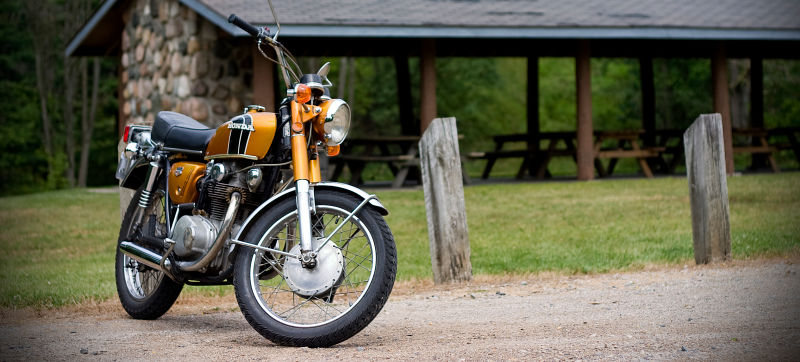
I was a salesman at a Honda motorcycle dealer in the 1970s. One day a kid and his father came in to buy a CB360. The kid was a spotty, monosyllabic little brute with a constant sniffle and two bold-face periods for eyes. The old man’s jaw was cocked to one side as if someone in his past had decided it needed punching.
We haggled a bit over the price, came to a deal, and I rolled the bike from the showroom to the service department for a final check while we signed the paperwork.
Dad didn’t look best pleased with the transaction—he was convinced I had cheated him somehow—and when I asked if they wanted insurance he looked at me like I’d offered to punch his jaw back into alignment. I shrugged, got him to sign on the dotted line, and rode the bike out to the parking lot to turn it over to his offspring.
I asked if said offspring had ridden before, and the old man growled that of course he had. The kid—in a T-shirt and jeans, no helmet—fired up the engine, pulled in the clutch, put the bike in gear, absolutely pinned the throttle, and then simply let go of the clutch lever as if it had turned into a snake.
He rocketed out of the parking lot, across the two-lane street in front of the shop, and into the chain-link fence that bordered a four-lane highway with cars and semis whizzing by on the other side. The fence bowed outward like a catcher’s mitt, rebounded, and flung the bike and the kid halfway back to the parking lot.
Dad and I dragged the mess out of the road and sat Junior down to listen to the tweetie birds that only he could hear as they circled his thick head. Dad immediately demanded I roll out a new bike for his sprog because something was obviously wrong with the first one or he wouldn’t have crashed it. I patiently reminded him that not 10 minutes ago I’d offered to sell him insurance, which he’d declined, and that I’d be happy to get him an estimate for repairing the damage, but it was all on him. Things only got uglier from then on.
It wasn’t a memorable day for Stupid & Son, but it was one I never forgot, because it hammered home the importance of learning to ride—and learning a few other things as well—before you buy your first bike. Since then I’ve seen a lot of people make not only the same mistakes, but come up with new ones. Here, then, are some suggestions to make sure you don’t turn into That Guy if you’re thinking about buying your first motorcycle.
Get Some Class
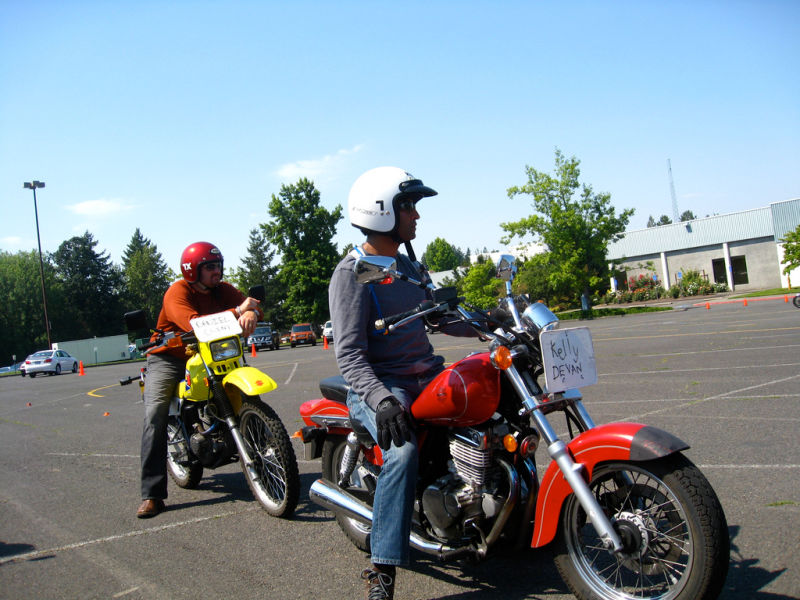
Before you even think about what you want to park in your garage, take a new-rider course. The Motorcycle Safety Foundation is the gold standard of rider training; some states require new riders to take an MSF course to get a bike license, and many insurance companies give discounts to MSF graduates.
I could write another half-dozen paragraphs about why taking an MSF class is a good idea, but they’d all boil down to this: Motorcycling is fun and exciting, sure, but it’s also dangerous and scary, and it requires skills you just don’t get from driving a car.
Taking to the streets without rider training is as stupid as flying a plane without taking flight school first. End of lecture.
Which Bike?
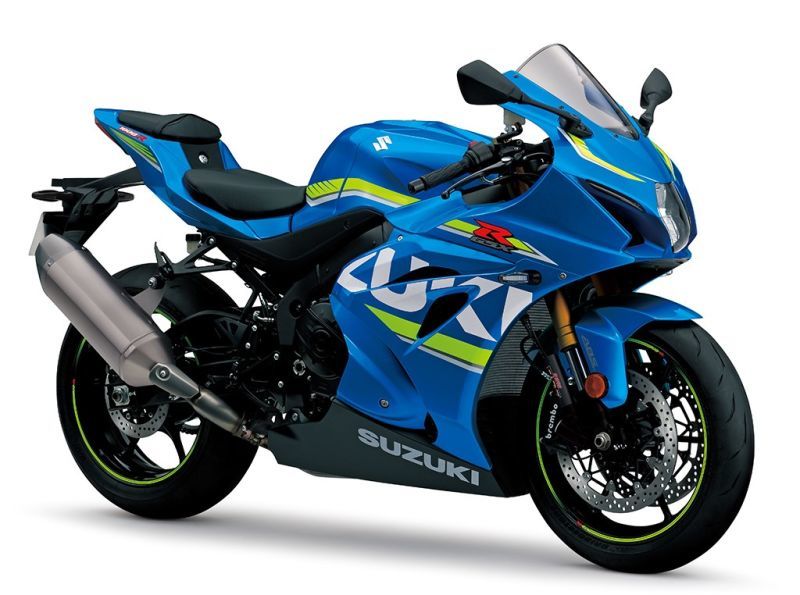
Motorcycles are a lot more specialized than cars in terms of what they’re designed to do, and how well they do the things they’re not designed for. You can drive a Mini Cooper S on a gravel road and get where you’re going, but taking a sportbike down a rutted dirt trail could easily end in tears, and even if it doesn’t you won’t have much fun. First, zero in on the kind of riding you want to do, and then get a bike that’s designed to do it.
Whatever you decide to buy, do your homework on the brand, the model, and—unless you plan to work on the bike yourself—the dealer where you’ll take it for service and parts. Google is your friend here. Search for the bike plus “reliability,” “issues,” and “reviews,” and browse around in online forums dedicated to the model you’re looking at. Don’t be put off if one or two posters complain about the same issue, but if you see 12 threads on page 1 with the words “alternator failure” in the title, that’s a hint.
Road tests of new bikes online and in print are useful, but only to a point; just as with actual human beings, no two motojournalists are alike, and tastes and opinions differ. Also, only a few publications on either side of the digital divide do long-term tests of new bikes, making online forums the best place to see how well a given model held up over time.
One more tip: Don’t buy more bike than you need. The average 600cc bike has more power than many experienced riders can use; you don’t need to go that high up the displacement ladder to a get a good starter bike.
The 500cc-and-under class is in the middle of a renaissance of sorts, with many manufacturers either introducing new small-to-medium displacement bikes specifically designed for new riders, or bringing to the U.S. bikes they originally made for foreign markets where smaller bikes dominate the sales charts. Start on a smaller bike and trade up when—and if—the time comes for something bigger.
New or Used?

I’ll probably catch some flak for this but I think the first bike you buy should be used, for two reasons. First, if it turns out you don’t like motorcycling and want to cash out, you don’t have a lot of money tied up in a loan, and a cheap used bike is easier to sell than a fairly new one.
Craigslist is full of brand-newish Harleys for sale at or near the price they cost new because the seller is upside down in a loan on a motorcycle that’s just sitting in the garage depreciating. Buy cheap so that if you decide riding’s not your thing, or that it’s time to trade up, you can sell cheap and move on.
Second, one of two things will happen while you’re honing your riding skills: You’ll drop your bike sooner, or you’ll drop it later. No reflection on your skills, just the reality of learning to ride. (That’s why some of the bikes the Motorcycle Safety Foundation uses in its new-rider courses look like they were brought to the site by dragging them behind a gravel truck.)
You have the option of replacing broken parts with used ones from a salvage yard, or just living with the damage until you’re ready to move up to a better ride.
Get the Bike That Fits You
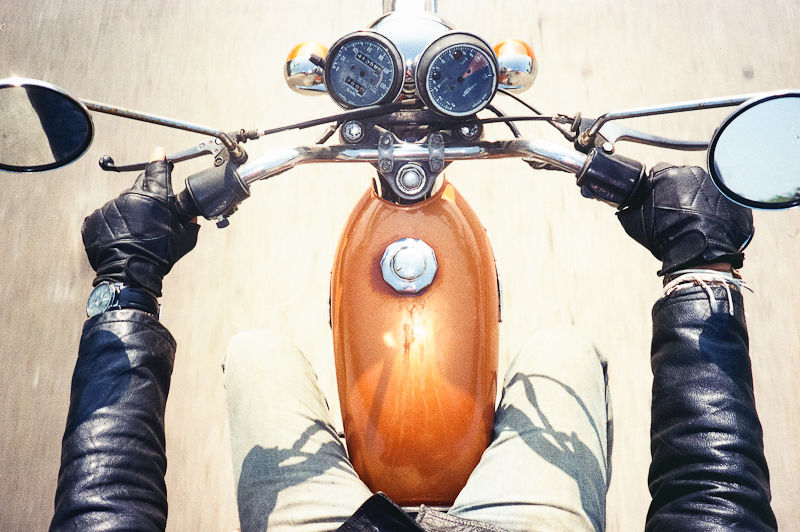
Unlike cars, with their adjustable seats and steering wheels, bikes don’t come with much if any adjustability for either the rider or the passenger; for the most part you sit in the position dictated by the bike.
Sportbikes and cruisers represent the extremes, the former with a leaned-forward, almost fetal crouch, and the latter a laid-back, reclining slouch. Which one fits you best isn’t necessarily something you can determine right away. What felt good for two minutes in the showroom might be torture after two hours on the road. If that’s the case, the aftermarket provides a wealth of options for swapping handlebars, seats, and footpegs.
By far the most important dimension for a new rider to consider is seat height. Being able to plant both feet flat on the pavement is a huge confidence builder for riders who fear dropping a bike at a light and looking like the noobs they are.
After seat height, weight matters. Weight generally goes up with displacement, though not always; some cruisers with only modest displacement weigh a bloody ton. There’s an easy way to pick up a dropped motorcycle (Google it on YouTube for examples) but sprawled on the ground with a 600-pound road whale lying on your leg isn’t the best time to learn it.
Get a Test Ride
Ha. Just kidding. Few dealers give test rides these days, and you can count on the fingers of one foot the ones that’ll turn a rookie loose on anything. Private sellers are just as leery, and with good reason––better reason, really, since they don’t have the kind of liability insurance most dealers carry.
You can read all you want about a bike that interests you, but you’re still getting second-hand information––you have no real idea what it would be like to ride it yourself. I wish I had some sort of workaround for this. Other than a friend who’ll trust you with their bike, I got nothing.
Gear Up
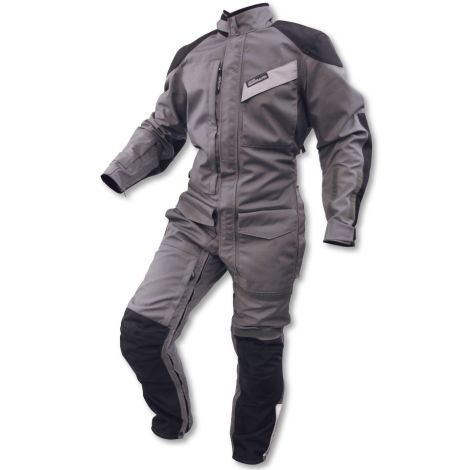
Motorcycling Cliché That’s True #47: Dress for the fall, not for the ride. As mentioned already, motorcycles can be hazardous to your health. Hedge your bets by wearing, at the very least, a DOT- or ECE-approved helmet––not one of those stupid cat bowls that make you look like your face was painted on the lower half of an eight ball—a jacket with impact-absorbing padding (usually called “armor” even though it’s not made of metal), gloves, and ankle-high boots.
Add riding pants to the ensemble and you’re ATGATT, “all the gear, all the time,” which is what you should wear on your bike.
Following is a list of five two-wheelers that make great starter bikes for prospective riders of average stature. The list is highly subjective based on criteria that I think are important for new riders, personal to a degree in that I’ve owned or ridden some of them or know someone else who has, and by no means even remotely comprehensive, as I’m sure many commenters will point out in BOLD CAPS as they tell my why my choices suck and which bikes I should have included instead of the ones I did. (They’ll probably be right, too.)
Suzuki SV650
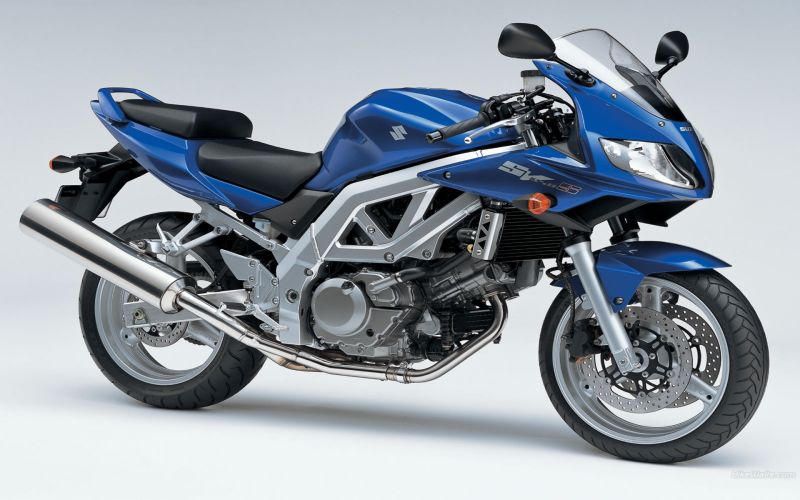
A light and narrow bike with nimble handling, swoopy styling, and a nearly indestructible engine. It’s small enough to learn on until your skills sharpen, and big enough to stay with afterward.
There’s a huge online owner community, and lots of parts and accessories are available. ABS (anti-lock brakes) was an option from 2007 onward.
Triumph Bonneville
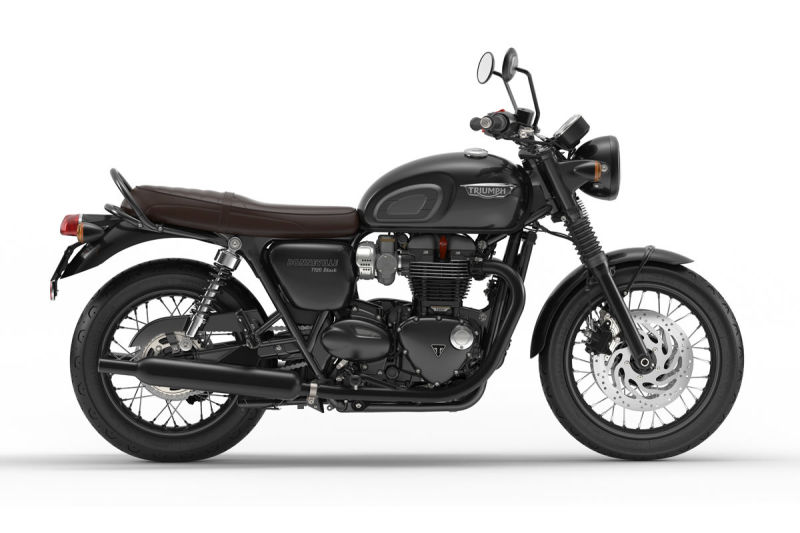
Available in several models, all with parallel twin engines, low seats, and a broad spread of power that won’t have novices searching in vain for the right gear––just twist the throttle and almost whatever gear you’re in is the right one.
I had a 2012 865cc Bonnie, and loved it. It’s the kind of bike you could start out on and never outgrow.
Kawasaki 900 Vulcan
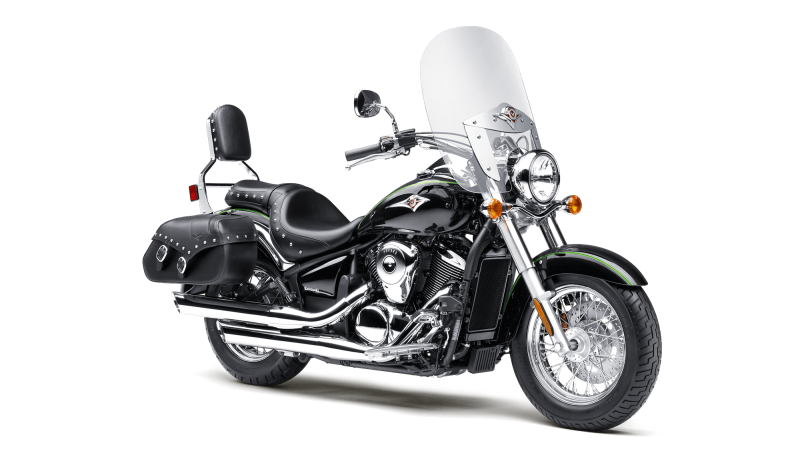
Typical of many middleweight cruisers, the Vulcan is heavy––anywhere from 560 to 600 pounds, depending on the trim level––but the weight rides low enough that tip-overs are usually preventable.
V-twin engines like the Vulcan’s are renowned for broad, fat powerbands that help new riders learn clutch control. Another bike supported by a big online community.
Kawasaki 250/300 Ninja
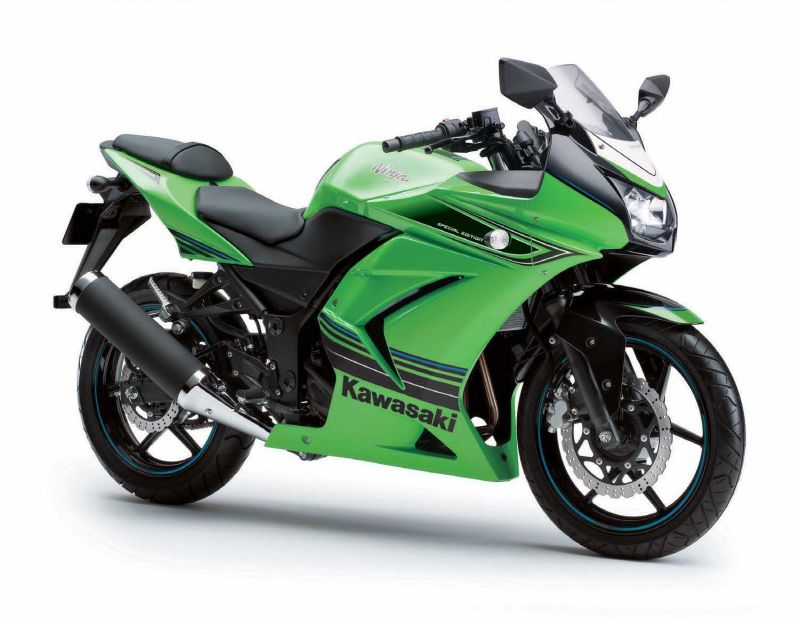
When it comes to sportbikes Kawasaki has always run with the big dogs, and some say the 250 Ninja is friskiest pup in the litter. It’s been through several models and upgrades (most recently a boost to 300cc) without losing its overcaffeinated charm. It might be too much too soon for some rookies, but for others it’s a tantalizing taste of what lies ahead in their riding lives.
Any Scooter 400cc And Up
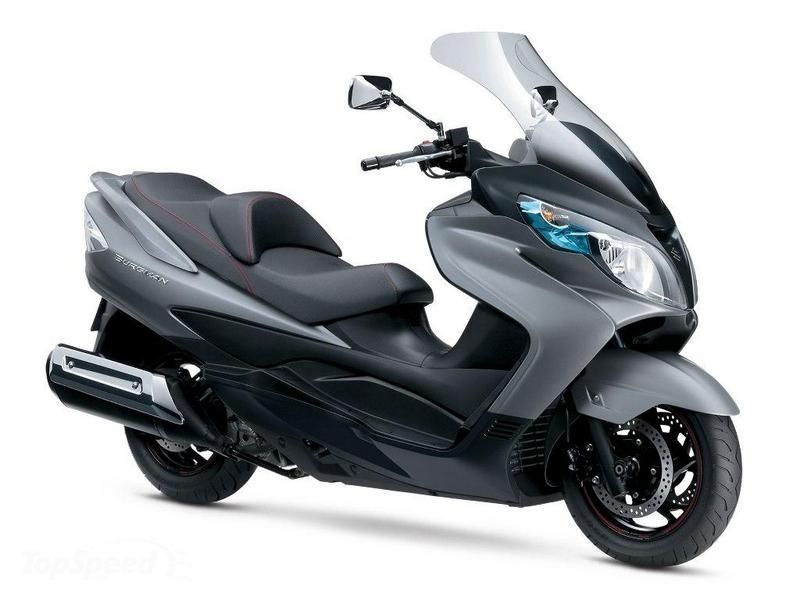
Incoming! Brace for impact! Yes, I like scooters, and I don’t care who knows it. They’re as much fun as motorcycles, offering the same wind-in-your face goodness without the clutching and shifting that flummox so many new riders.
You can commute on them, and with a big enough engine the freeway is no problem. They’re not for those whose egos rule their lives, but just about anyone else with an open mind will get a hoot from a scoot.

Jerry Smith has been a motojournalist for… well, a very long time. When he’s not writing about motorcycles, he makes up stories about people who don’t exist. His latest novel, Dents, is about some of those people, and the awful and funny things he makes happen to them.